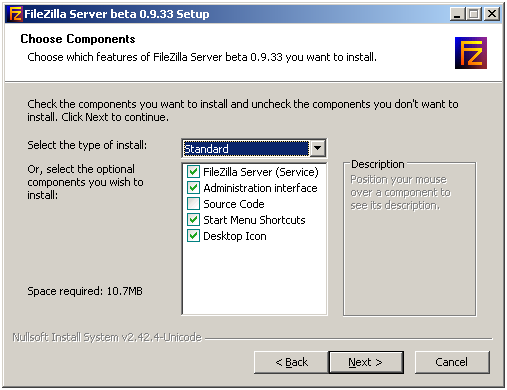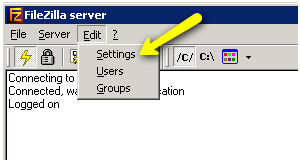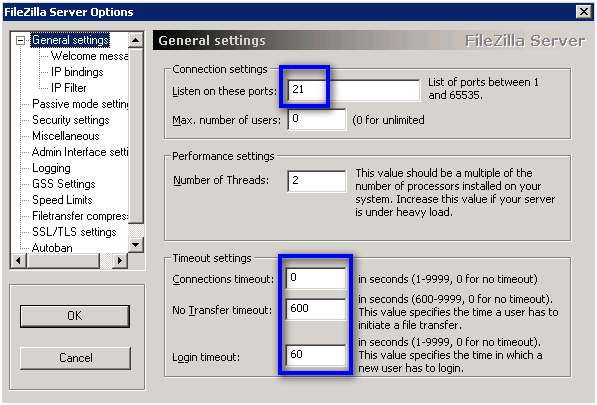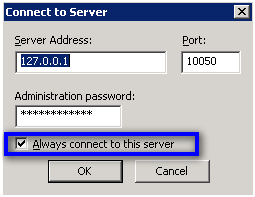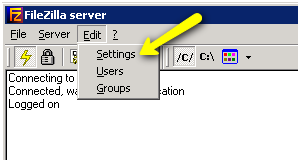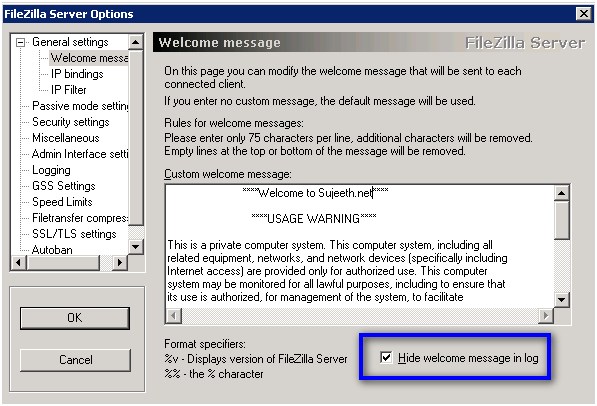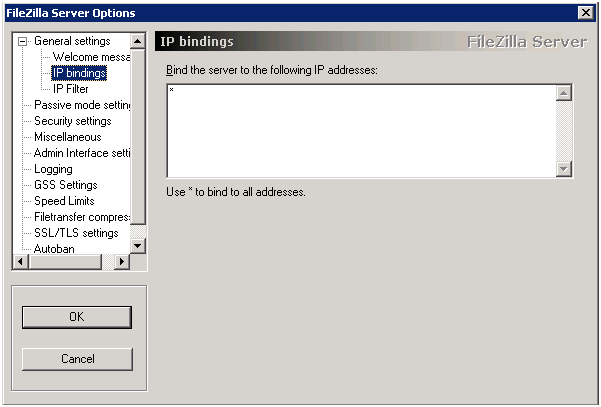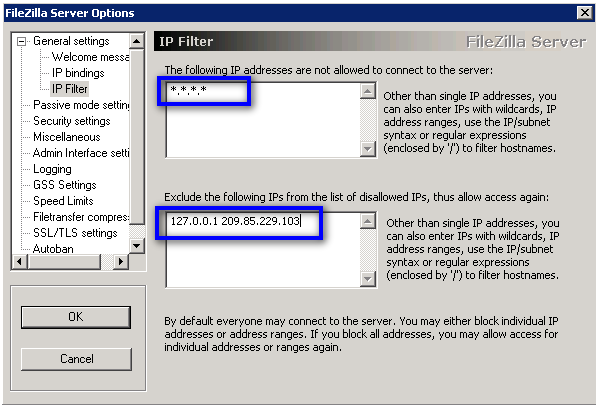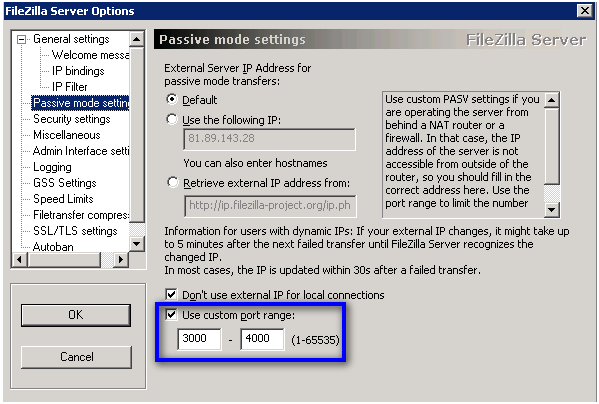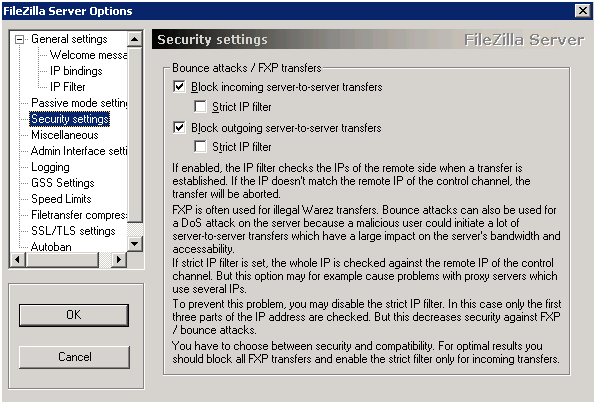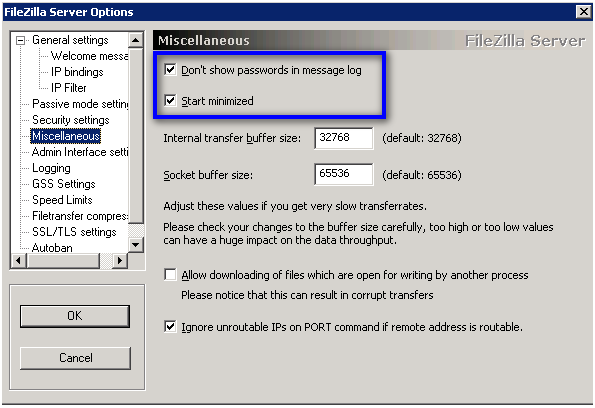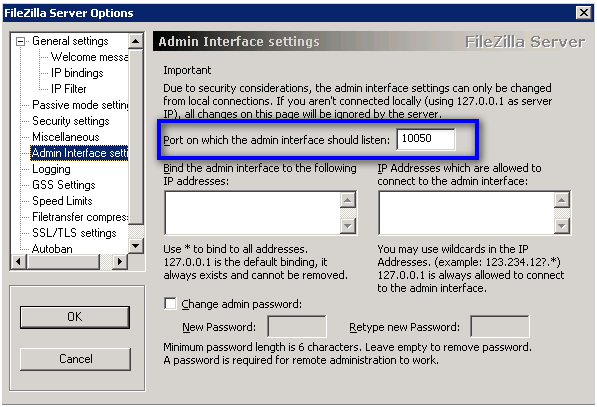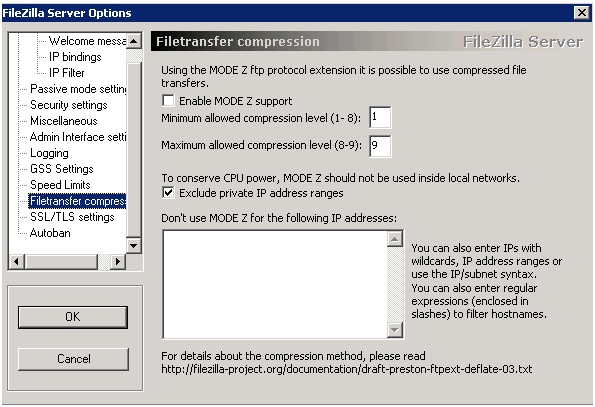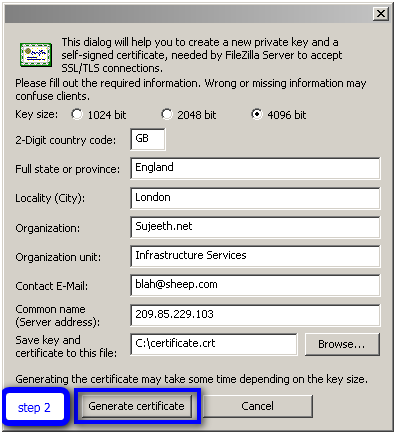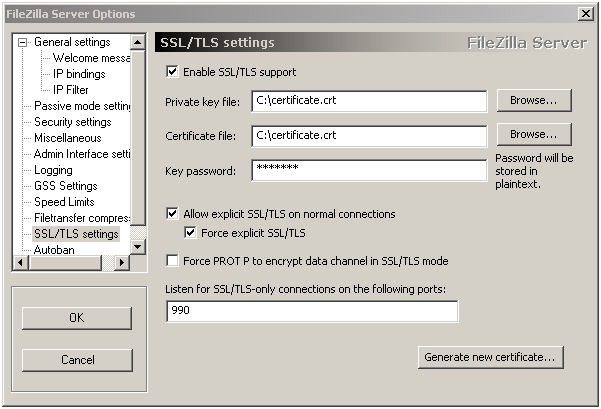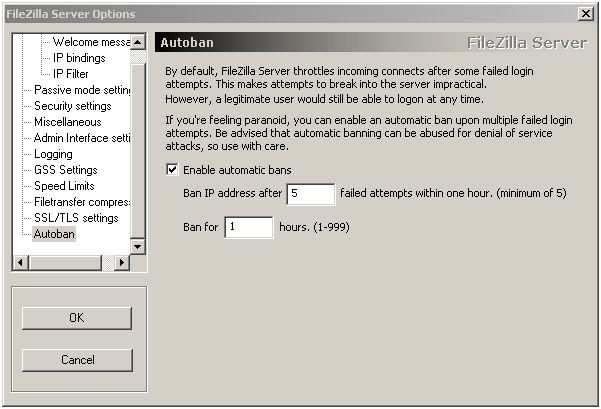I am going to show you how to setup an FTP Secure (FTPS protocol) on Windows Server 2003 and have your own version of FTP server rather than default ftp in IIS.
FTPS should not be confused with the SSH File Transfer Protocol (SFTP), an incompatible secure file transfer subsystem for the Secure Shell (SSH) protocol. It is also different from Secure FTP, the practice of tunneling FTP through an SSH connection.
Please make sure you don’t have IIS FTP service enabled and running. If you have it running, please disable FTP service as we are going to use the same ports as a standard FTP
Download the latest version of FileZilla Server. At the time of writing, it was 0.9.33.
Choose Standard install and proceed. This will install the Windows service for FileZilla and the GUI for administration.
After the Installation is completed, it is now to configuring the server. To start the Administration interface, Connect to 127.0.0.1 which is heelpbook.altervista.org on Port 10050 (you have given this during installation).
Setup your server as per the images. They are self explanatory.
We are going to have the FTP Secure to listen on port 21 which is the default FTP port.
After the Installation is completed, it is now to configuring the server. To start the Administration interface, Connect to 127.0.0.1 which is heelpbook.altervista.org on Port 10050 (you have given this during installation)
Setup your server as per the images. They are self explanatory.
We are going to have the FTP Secure to listen on port 21 which is the default FTP port.
Setup your own customised welcome message when the users logs in. Make sure you select to hide the message in log, because this might increase the log size.
Use * to bind all IP addresses on the local system. If your server has multiple IP addresses assigned, provide only the IP that you want to use:
To have better control over security, Ban all IP addresses to connect and include only the IP address in the exclude list that want to connect. Separate the IP address with a space. Here I allowed google.com IP (209.85.229.103)
The next few settings are straight forward:
Enable logging to see who the usage and also enable deletion of older log files or else you will end up requiring huge disk space:
Here you can set the download and upload speed limits if you wish to. Note that these limits are global settings, so they will take over individual user settings.
This is the main part where we configure an SSL certificate to set our server as FTPS. You can use a public certificate which you need to purchase. But for the demo purposes, I am going to use inbuilt certificate generator.
Provide your server IP address in the Common name:
Go back to SSL/TLS settings and give the path to the generated certificate and a key password:
And finally Autoban settings and we are done with Server Configuration.
Before you proceed to connect, make sure port 21, 990 and 3000-4000 are allowed on your firewall. This is very important.
SOURCE | LINK | LANGUAGE | ENGLISH |
